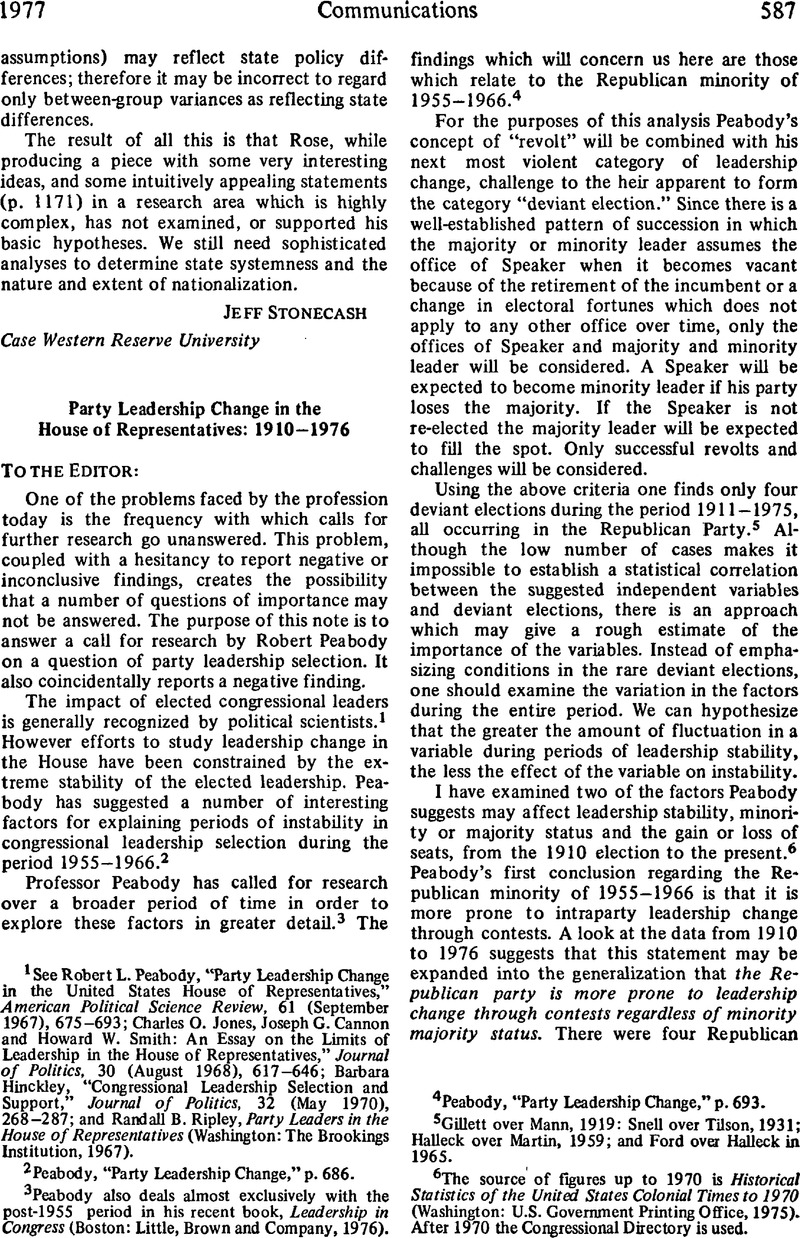No CrossRef data available.
Published online by Cambridge University Press: 01 August 2014

page 587 note 1 See Peabody, Robert L., “Party Leadership Change in the United States House of Representatives,” American Political Science Review, 61 (September 1967), 675–693 CrossRefGoogle Scholar; Jones, Charles O., Cannon, Joseph G. and Smith, Howard W.: An Essay on the Limits of Leadership in the House of Representatives,” Journal of Politics, 30 (August 1968), 617–646 CrossRefGoogle Scholar; Hinckley, Barbara, “Congressional Leadership Selection and Support,” Journal of Politics, 32 (May 1970), 268–287 CrossRefGoogle Scholar; and Ripley, Randall B., Party Leaders in the House of Representatives (Washington: The Brookings Institution, 1967)Google Scholar.
page 587 note 2 Peabody, , “Party Leadership Change,” p. 686 Google Scholar.
page 587 note 3 Peabody also deals almost exclusively with the post-1955 period in his recent book, Leadership in Congress (Boston: Little, Brown and Company, 1976)Google Scholar.
page 587 note 4 Peabody, , “Party Leadership Change,” p. 693 Google Scholar.
page 587 note 5 Gillett over Mann, 1919: Snell over Tilson, 1931; Halleck over Martin, 1959; and Ford over Halleck in 1965.
page 587 note 6 The source of figures up to 1970 is Historical Statistics of the United States Colonial Times to 1970 (Washington: U.S. Government Printing Office, 1975)Google Scholar. After 1970 the Congressional Directory is used.
page 588 note 7 Peabody, , “Party Leadership Change,” p. 693 Google Scholar.
page 588 note 8 The Republicans suffered election disasters in 1912, '22, '30, '32, '48, '58, '64 and '74. The Democrats in 1914, '20, '38, '42, '46, and '66.
Comments
No Comments have been published for this article.